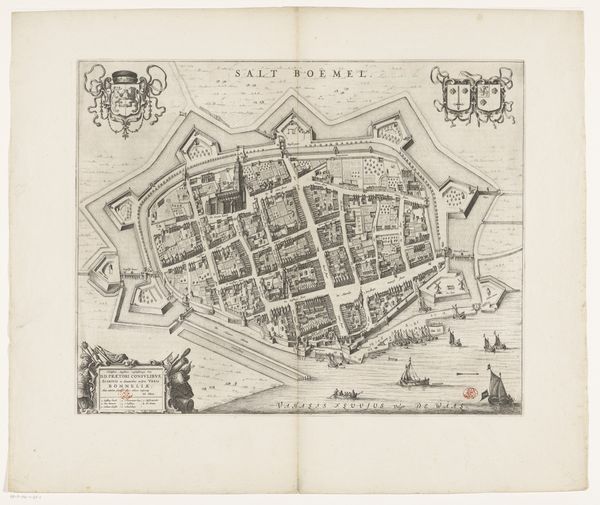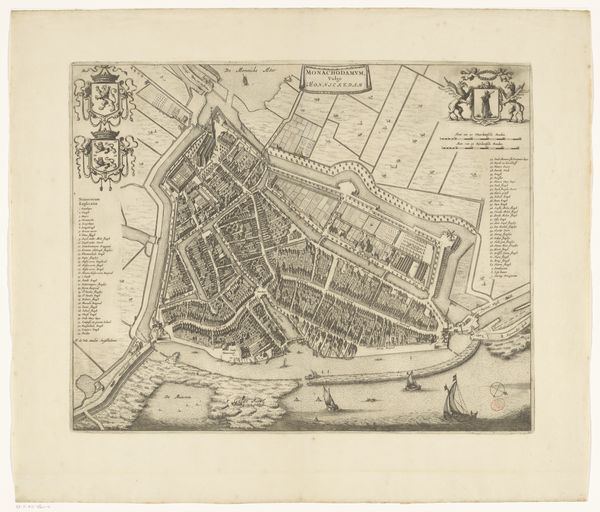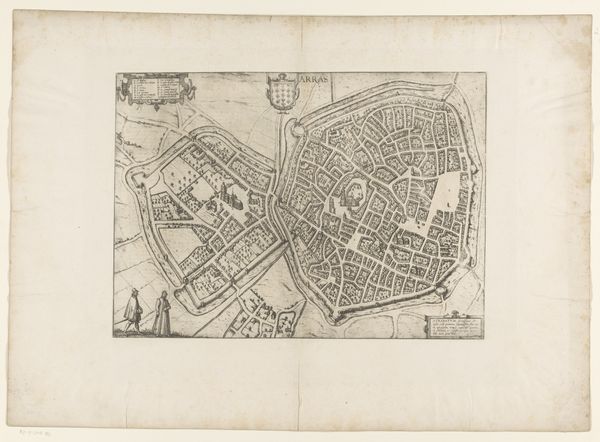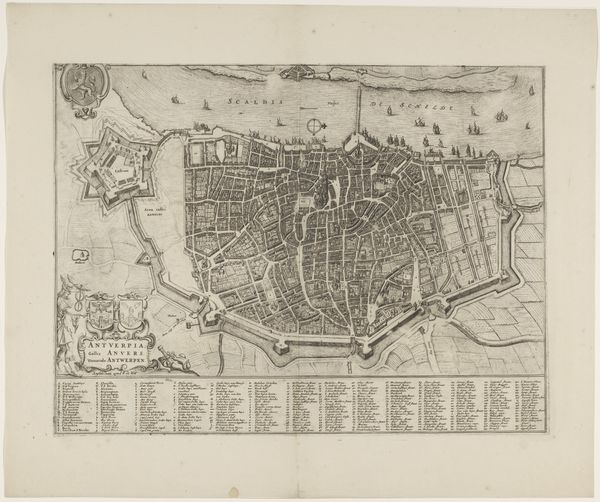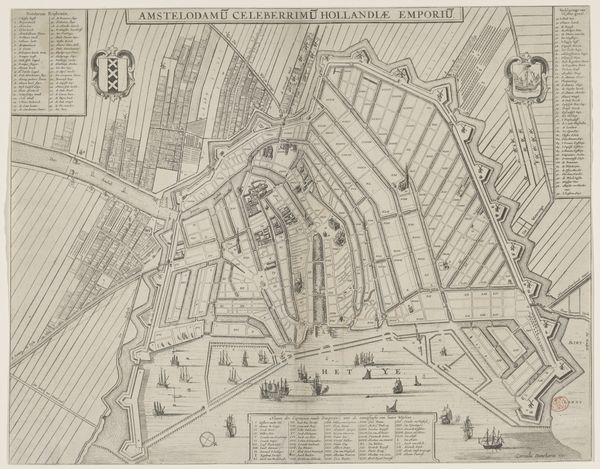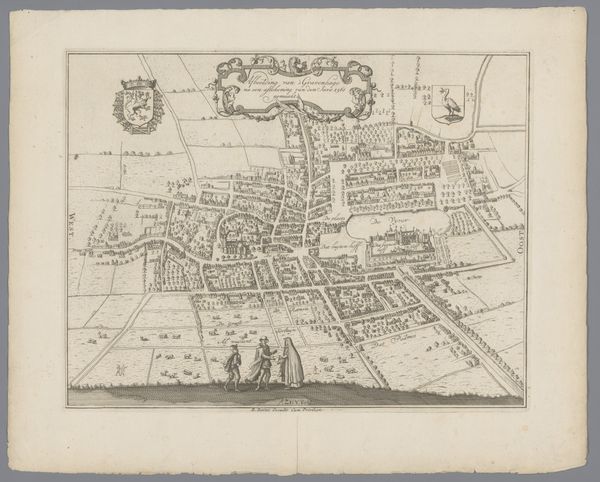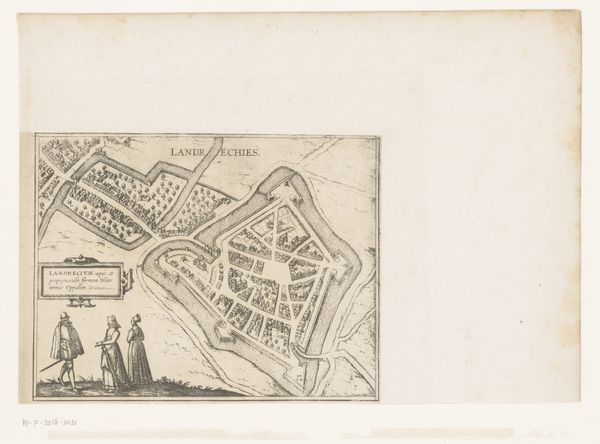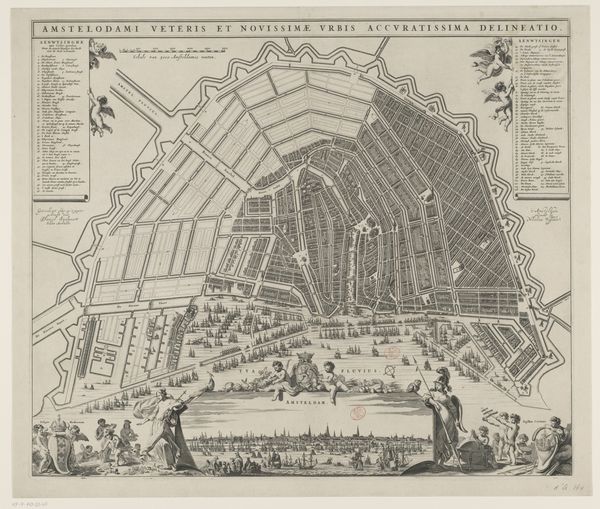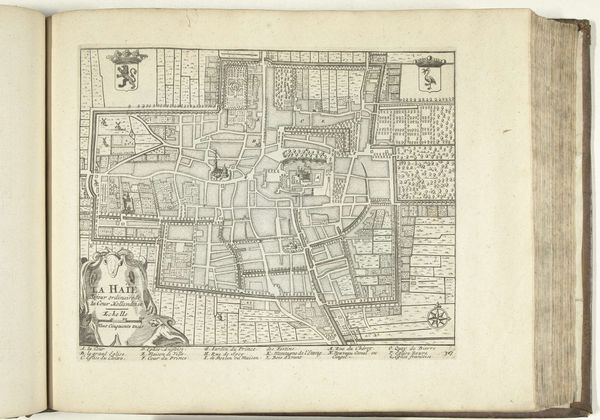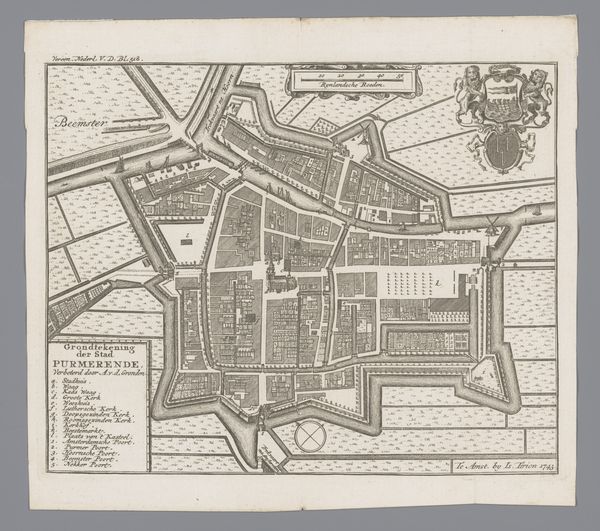
print, engraving
#
dutch-golden-age
# print
#
old engraving style
#
geometric
#
cityscape
#
engraving
Dimensions: height 465 mm, width 577 mm
Copyright: Rijks Museum: Open Domain
Curator: This print from 1641 is titled "Kaart van de polder Velgersdijk," which translates to "Map of the Velgersdijk Polder." It depicts a designed landscape from the Dutch Golden Age. It's fascinating to see these meticulously planned areas rendered in such detail. Editor: The immediate feeling is one of calculated order. Everything is neatly demarcated into rectilinear forms; the overall impression is precise, even rigid. There's an element of control being visually asserted here. Curator: Absolutely, the geometric shapes reflect a period of immense land reclamation and agricultural engineering. These polders—land reclaimed from the sea—were potent symbols of Dutch ingenuity and prosperity. The iconography underscores this point; for instance, the sculpted figure reclining above the descriptive pedestal, adorned with a crown and verdant trees, is not just decoration; it seems to symbolize sovereignty over the land and nature. Editor: The pedestal really drives home your point – as if reminding viewers of the deliberate and intellectual activity needed for land development! The way it is designed into this otherwise seemingly practical map speaks to the relationship between society, labor and images of Dutch prowess and control. Curator: Yes! And notice, too, how the compass rose and surveying tools depicted further emphasize this era’s scientific advancements. The placement and inclusion of these are not by chance. They tell us so much about how this society wanted to be seen. This print offers not only geographic information, but provides social commentary, emphasizing the key values of its era through a potent combination of pragmatism and nationalistic symbolism. Editor: I agree; the map certainly works as a potent form of visual rhetoric. And looking at this as an artifact of early capitalism, each rectangle represents a plot of land, and so, potential wealth. It visualizes the commodification of land, quite literally. Curator: I find myself reflecting on the immense cultural pride such a rendering might have instilled at the time; it's a compelling assertion of human dominance. Editor: A powerful illustration of how even seemingly utilitarian objects carry profound ideological weight. I find it incredible how a simple print from centuries ago can speak to these issues still relevant today.
Comments
No comments
Be the first to comment and join the conversation on the ultimate creative platform.
